Dear friends,
Last year, while I was settling into life in rural Cyprus, something gruesome happened in my office.
I was sitting at my desk, finishing a piece of work. I saved it and pressed Print.
The laser printer began to whirr, then there was a click and it pulled a piece of paper through its mechanism and out of the slot at the top.
I reached down and picked up the sheet. But when I turned it over, I recoiled in shock: the paper was covered in blood and a thick greeny-yellow ooze.
The sight was both revolting and surreal. It didn’t compute. How had blood come out of my printer? I rocked backwards and forwards on my ergonomic stool, staring at the printout, feeling like the protagonist of a psychological horror film about a deranged digital nomad.
I knelt down and took the lid off the printer.
There, below the wheels and rollers, was a small, mangled skink. Without meaning to, I had printed a lizard.
It must have got into the house, spotted the dark opening at the bottom of the printer and crawled inside to take refuge.
I picked it up with a tissue and carried it outside.
As I threw the skink over the back fence, the encounter felt like a terrible, clumsy metaphor for my disconnection from the life outside my office, for the way we sacrifice the more-than-human world to our human-centred goals, for the way the living world gets crushed by our plans and projects and machines.
I walked back upstairs and wiped the lizard guts off the printer cartridge.
Since that fatal early encounter, I have been trying to forge a more harmonious relationship with the place I live, jogging through the valley below our house each morning.
Having always lived in cities, this is the first time I’ve had daily access to a rural landscape. And through spending regular time in the valley, watching it change with the weather and seasons, it’s a place I feel increasingly connected to and curious about – although, as I wrote last week, it’s complex and layered and I struggle to get my head around it.
I’m not sure what it means to feel connected to a place I understand so little. In fact, I feel slightly presumptuous claiming a connection when I can’t name most of the valley’s plants, explain its geology, decode the behaviour of its creatures or unpick the human forces acting on it.
I’ve had this feeling in smaller doses elsewhere: a sense that my ignorance disqualifies me from feeling part of a place, a desire to get to know it, but an uncertainty where to start.
A book I’ve found helpful on this question is A Sand County Almanac by Aldo Leopold, an account of his family’s attempt to restore the exhausted land of a run-down Wisconsin Farm in the 1930s and ’40s.
Leopold was a forester, conservationist and visionary ecological thinker, who argued that we need to stop thinking of ‘land as commodity’ and think, instead, of ‘land as community’: a balanced whole, all parts of which are important and interdependent.
He and his family took over the farm as an experiment, working there on weekends to put his principles into practice and bring the land back to life.
What I find most appealing about Leopold is the quality of his looking and noticing. He demonstrates a mode of attention that is available to anyone: approaching places, plants, creatures from a standpoint of fascination rather than expertise.
Early in the book, on a winter walk, he follows the trail of a skunk, recently awoken from its hibernation, and stops to muse on the animal’s route, plans, intentions. ‘I wonder what he has on his mind; what got him out of bed?’ Leopold looks around for answers, but can’t find them. ‘I turn homeward,’ he concludes, ‘still wondering’.
Similarly, he observes flocks of migratory geese, wondering why they choose certain places to land and not others – and again, walks home without an answer. ‘I am well content that it should remain a mystery’, he writes. ‘What a dull world if we knew all about geese!’
Leopold was an academic; he published hundreds of scientific articles. But he is refreshingly open about the limits of his knowledge. In fact, he seems to take pleasure in not knowing. He has a reverence for the mystery of the living world, from skunks and geese to the ground he walks on: ‘that dark laboratory we call the soil’.
Like Jane Bennett, who I wrote about a few weeks ago, Leopold is alert to the singular vibrancy of each specific object. Things are not just representative of classes of things. Looking at a heap of lumber, salvaged from a nearby river, he notes that each ‘old board has its own individual history, always unknown, but always to some degree guessable’. His woodpile is ‘a collection of personalities’. And although the ‘autobiography of an old board is a kind of literature not yet taught on any campuses’, for those who are curious ‘any riverbank farm is a library’.
What matters to Leopold, in our relationship with the natural world, is not the quantity of our knowledge but the quality of our ‘awareness’: our ability to tune in, pay attention, be curious.
He believed that, if more of us are to value and care for the living world, the priority is ‘building receptivity’ and bringing about ‘a change in the mental eye’, not just exposing people to abstract information. Education, unhooked from experience, can be counterproductive, he warns, and risks becoming ‘a process of trading awareness for things of lesser worth’.
I’m interested in the value Leopold places on awareness – given that this is what many of us have, and want, to bring to our surroundings. How we see the world seems to matter to him as much as how much we know about it. Indeed, the knowledge he values most seems to be a knowledge born of awareness.
‘We grieve only for what we know’, he writes. ‘We can be ethical only in relation to something we can see, feel, understand, love, or otherwise have faith in.’
To truly care about, and for, the natural world, we need to be truly aware of it.
Leopold describes the importance of ‘learning to see [our] own backyard’.
Jogging around the valley, I think this is what I’m up to: showing up, paying attention, learning to see. There’s much I don’t know about the valley, but I increasingly feel like I know it.
I know that at this point in the year the ants are active and several different species (the largest of which must be a giant to the smallest) live in nests on the dusty tracks along the edge of the orange groves.
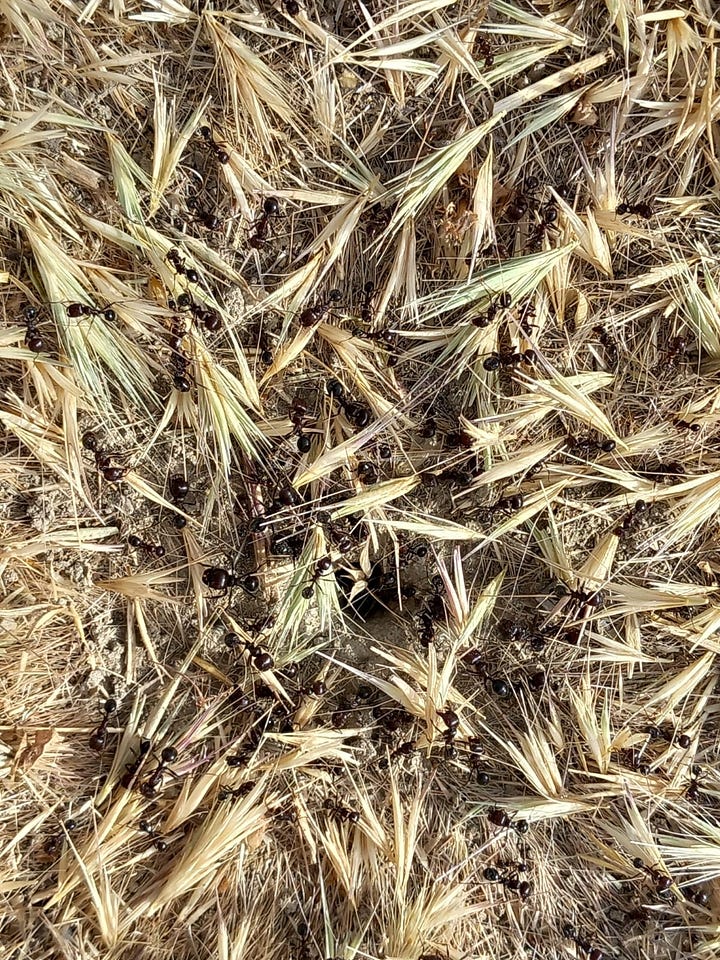
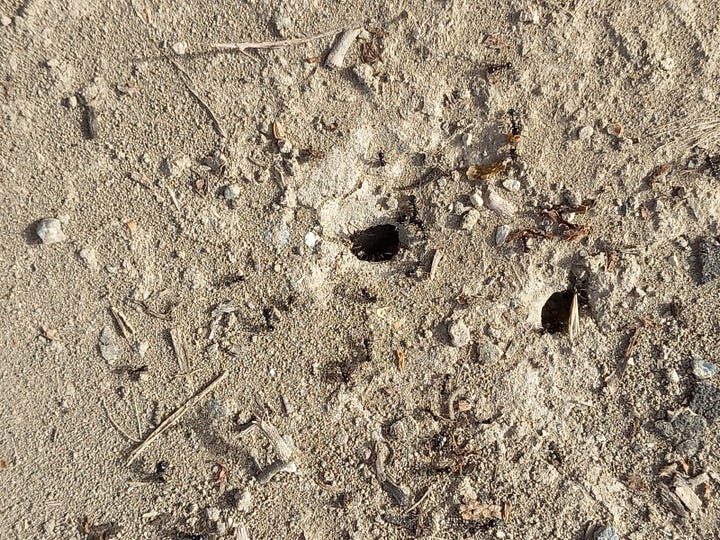
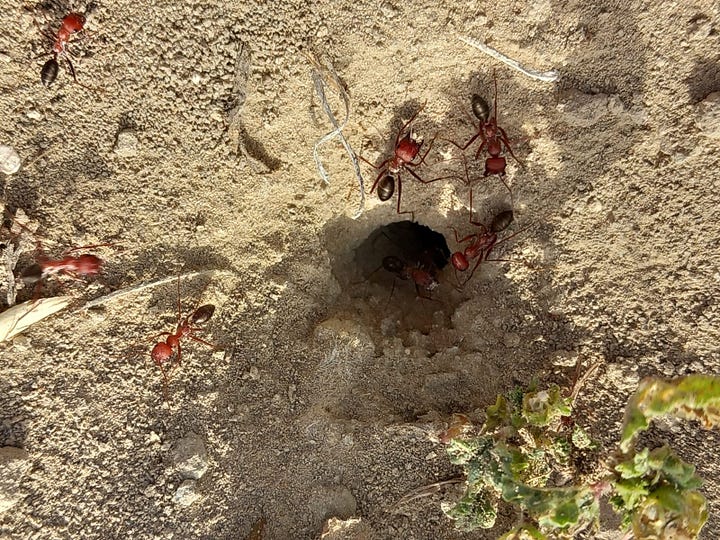
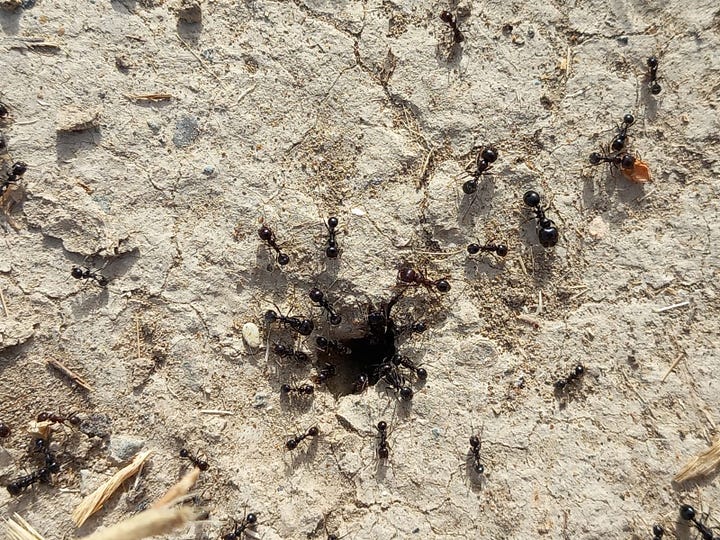
I know that the big brown snails have calmed down after a frenzy of travel in the last of the winter rains, and that a large group has (again) climbed up a telegraph pole and pitched camp on the Danger of Death sign.

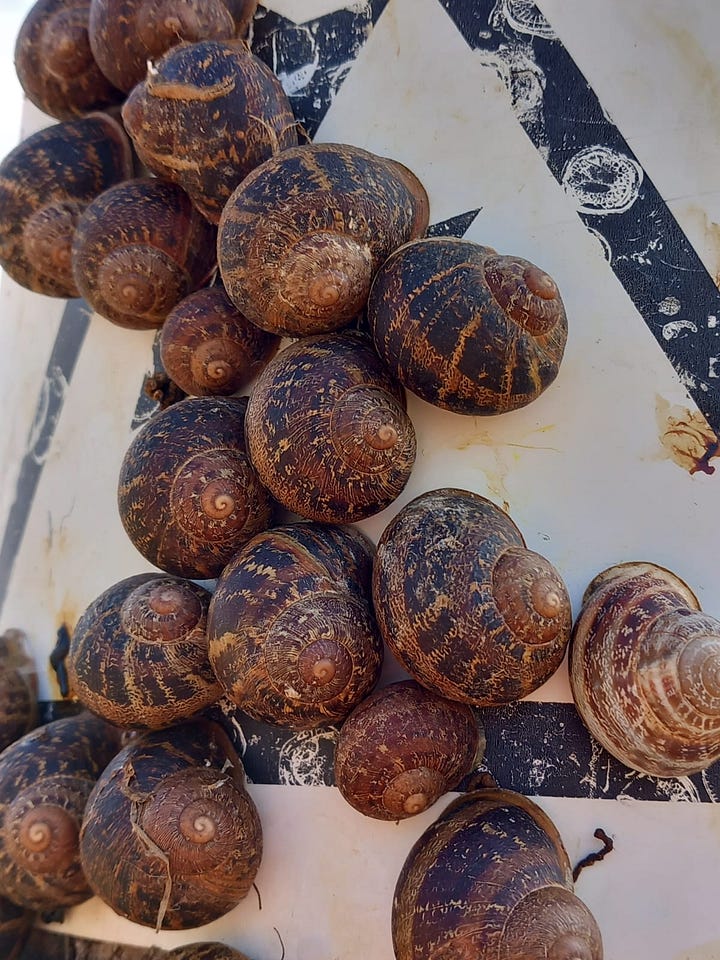
I know the small white snails are light enough to climb a single blade of grass and swing from the top.
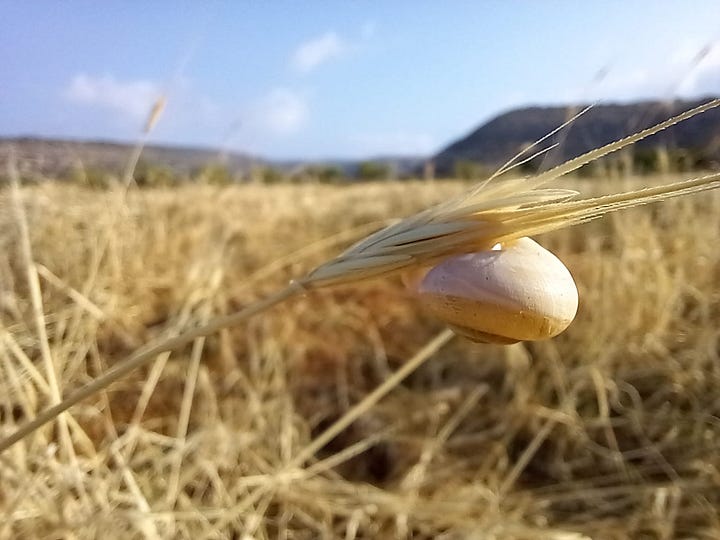
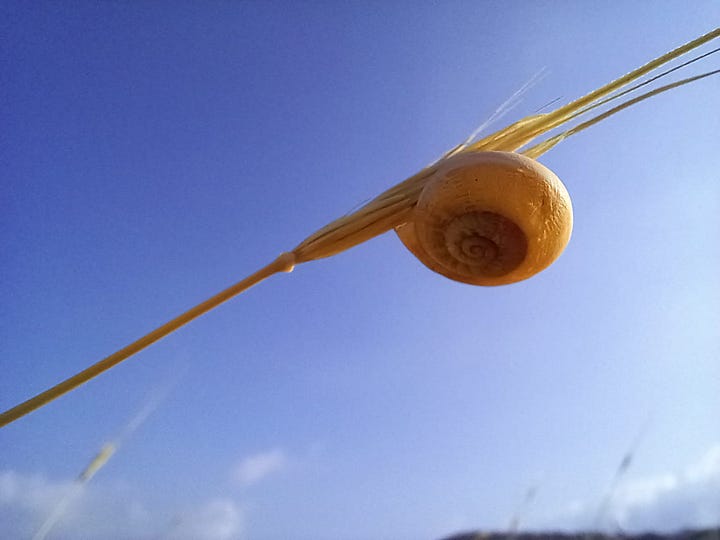
I know that poppies can grow through the rocks of the dried-out riverbed.
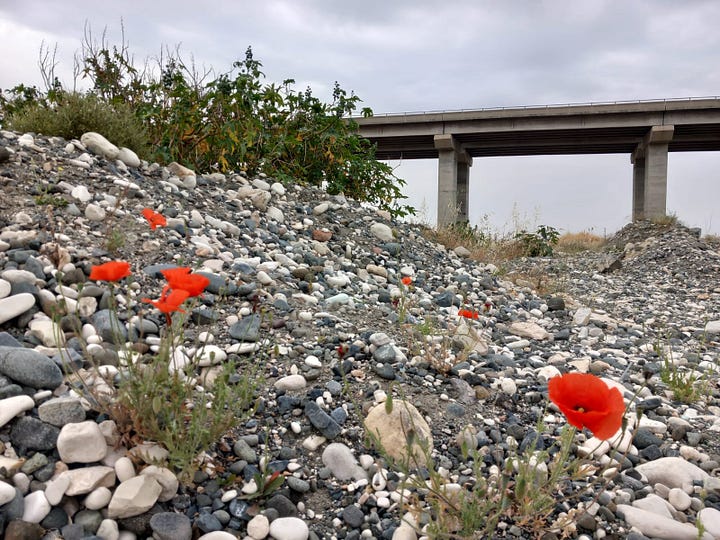
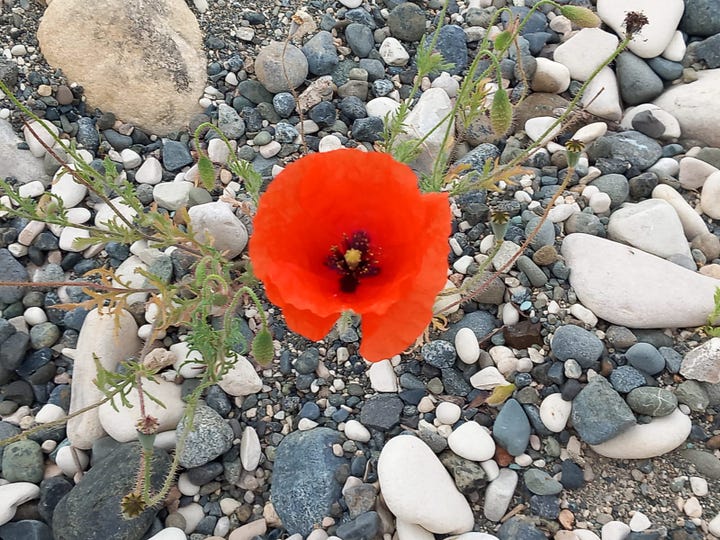
I know how prickly pear flowers grow around the edge of the plant’s huge paddles.
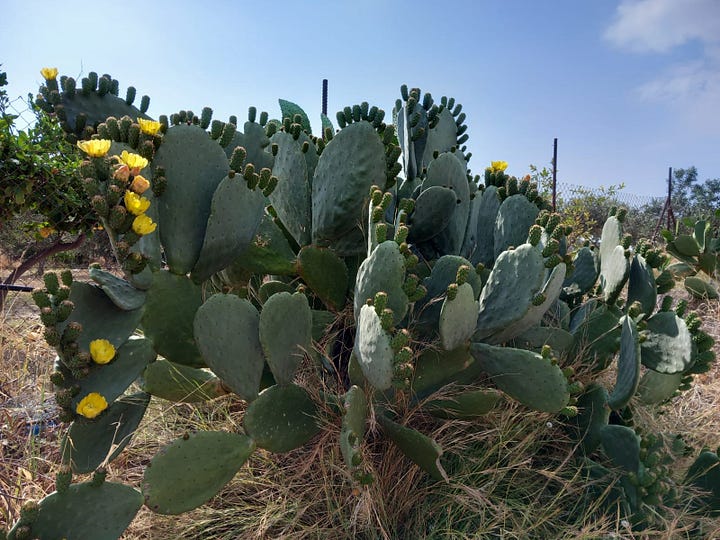
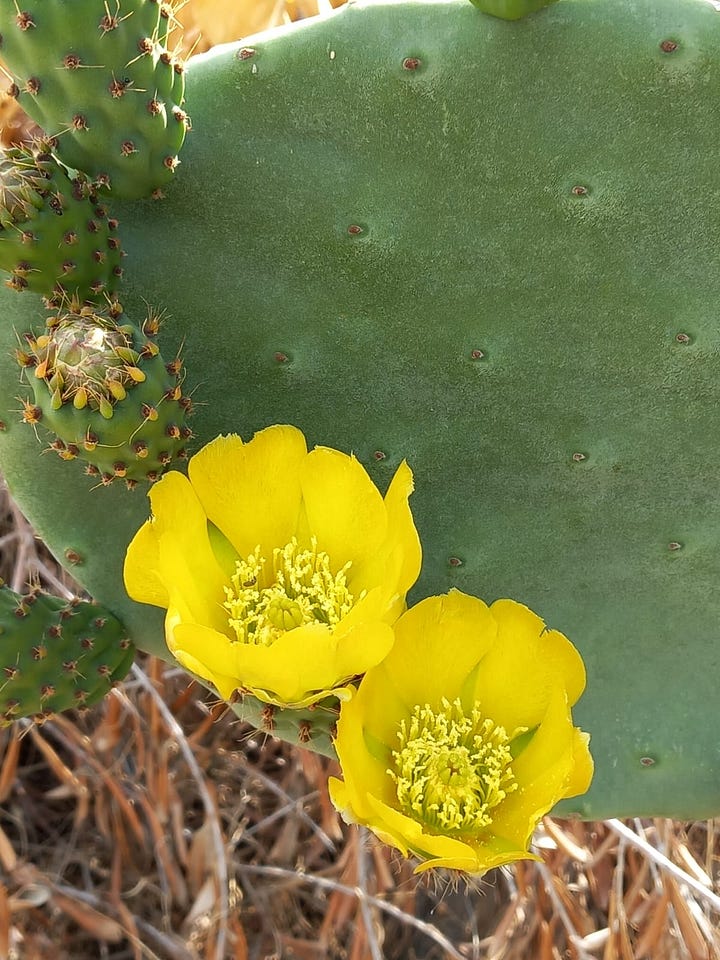
I know where there are ancient basins and dwellings carved into the rocks.
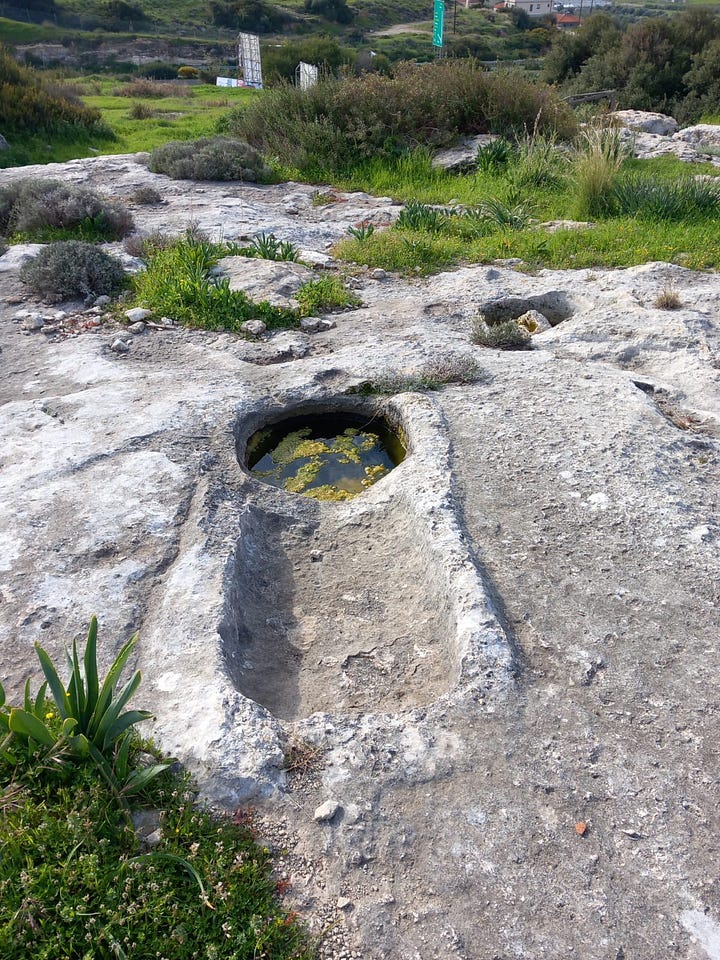
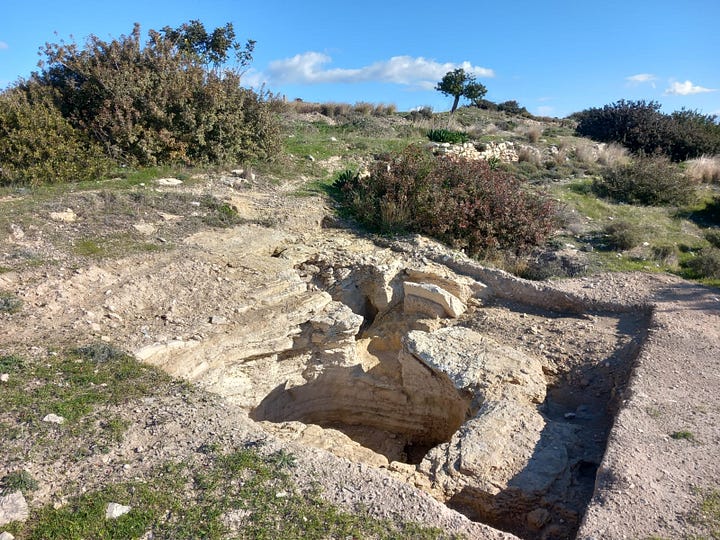
And the best places to find shards of old pots.
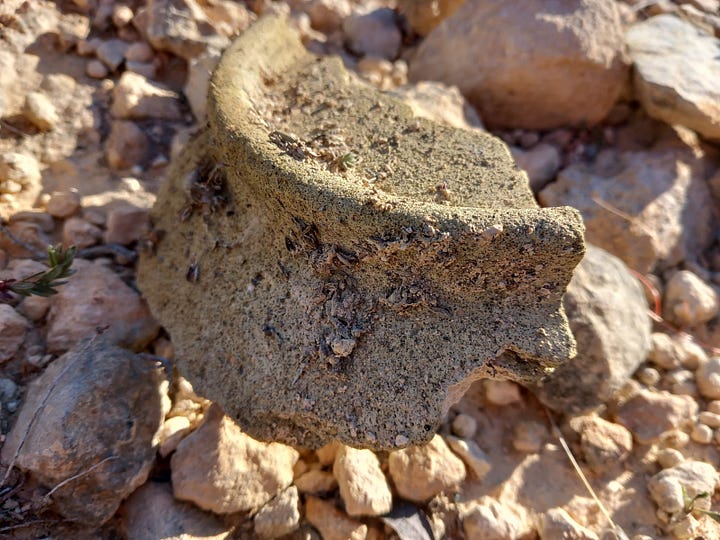
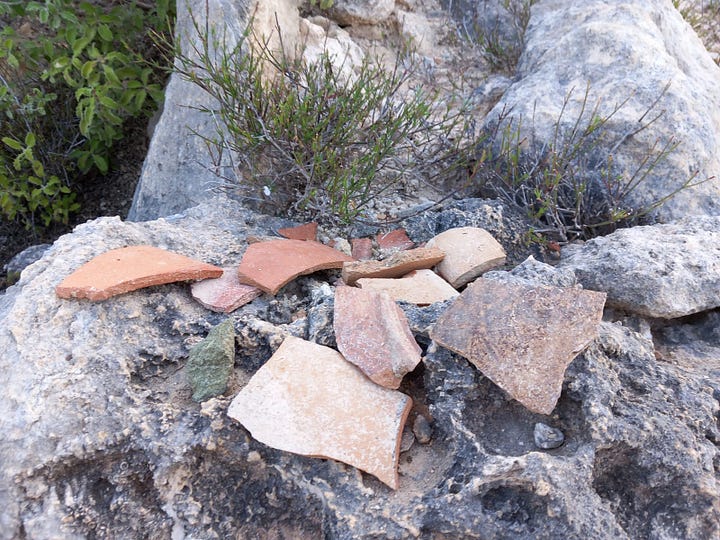
I know what the low thorny bushes on the cliffsides feel like under foot.
I know the stinging pain of grass seeds through my socks.
I know what the valley looks like in each season.
I know how skinks react when I surprise them, where the Black Whip Snakes live and the times of day you might see them, where partridges tend to hide and the explosive noise their wings make when they burst from the undergrowth.
I know the order in which the almond blossom, orange blossom and olive blossom come out. I know that olive blossom doesn’t have much of a scent.
I know the smell of fermenting fruit in the citrus groves.
I know when it’s pomegranate season and where there are three pomegranate trees that nobody picks.
I know where there are wild white grapes growing up the limestone cliffs.
Promoting perception and awareness, for Leopold, is not just about seeing more, but seeing differently. Specifically, seeing the land as an intricately and delicately balanced community, of which the human is not ‘conqueror’ but ‘plain member and citizen’.
This way of seeing leads to different ways of thinking and acting - and, ultimately, to what Leopold called the ‘land ethic’, a value system that involves extending ‘the social conscience from people to land’ and enlarging ‘the boundaries of the community to include soils, waters, plants and animals’.
Living according to the land ethic means making plans and decisions that respect, and promote the thriving, of all parts of that community. From this perspective, ‘[a] thing is right when it tends to preserve the integrity, stability, and beauty of the biotic community. It is wrong when it tends otherwise.’
Leopold’s land ethic may sound appealing to many working for social and environmental justice.
And yet, given how difficult it can be to enlarge the boundaries of community to include all people – never mind all blackbirds, woodlice and mosses – it is perhaps unsurprising that pushing the boundaries out even further is not a visible priority in a lot of social change work.
Many of the charities I’ve worked with have an intense, and deliberately narrow, focus on a specific human problem. That’s how they get results, funding, attention. They have to be able to point to their piece of the puzzle.
But Leopold and other ecological thinkers remind us that anything we do – even important, well-intentioned work – can have dangerous consequences if we treat the more-than-human world as a backdrop for our activities, not a community in which we are inevitably entangled.
An ecological perspective considers challenges within the context of the ecosystems they exist within. It has the potential to generate completely different approaches: opportunities for symbiosis, for viewing problems in one area as solutions for problems in another.
Bringing the more-than-human world into the frame presents us with more needs – but also more possibilities. How might we respond differently to loneliness, mental ill health, serious youth violence, chronic illness, and other big societal questions if we considered them in relation to the more-than-human network of needs and possibilities that surround them? What unexpected ideas and opportunities might emerge?
I wrote about the relationship between social and environmental questions in another letter. It’s a theme I’ll continue exploring.
Last week, I described the incomprehension I feel in response to this shape-shifting Cypriot village and valley.
Reading Leopold, I’ve come to feel that incomprehension is a valid response to a place – and potentially a fruitful one, if it sparks interest and curiosity. Close attention can be a form of love. Sustained looking can become sustained caring.
I value A Sand County Almanac as much as for Leopold’s confusion and fascination as for his understanding and insight.
Warm wishes,
Matt





This really resonated (when I finally concentrated on it and took the time to read it properly, it languished in my inbox for a while). Those poppies are just wonderful. I'm always encouraged by the tenacity of nature and its ability to reassure me because it always finds a way.
I've always wanted to work on a farm because my granny was raised on one, but frankly I wouldn't have a clue (and would probably look like a middle class idiot who quite obviously doesn't have a clue).